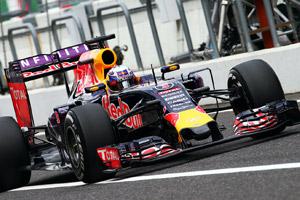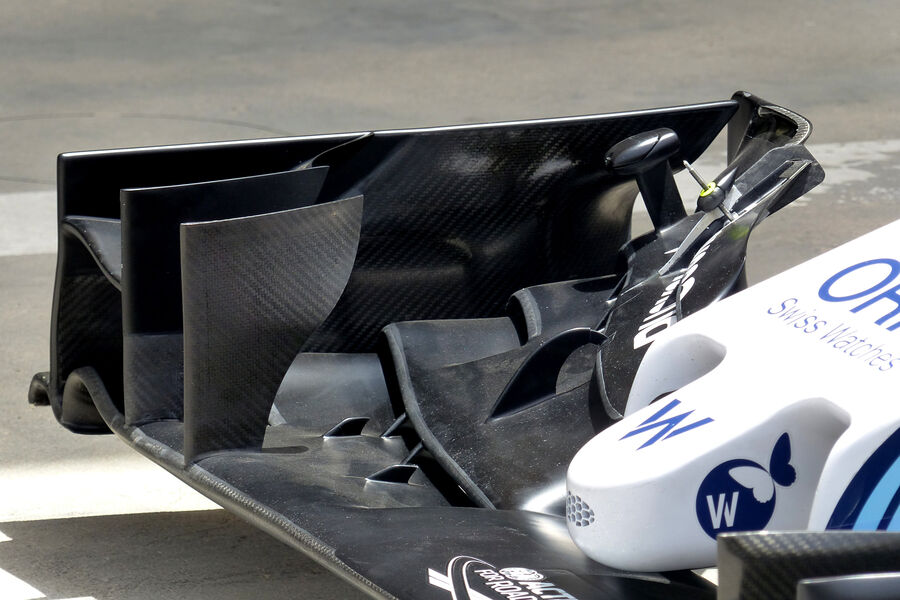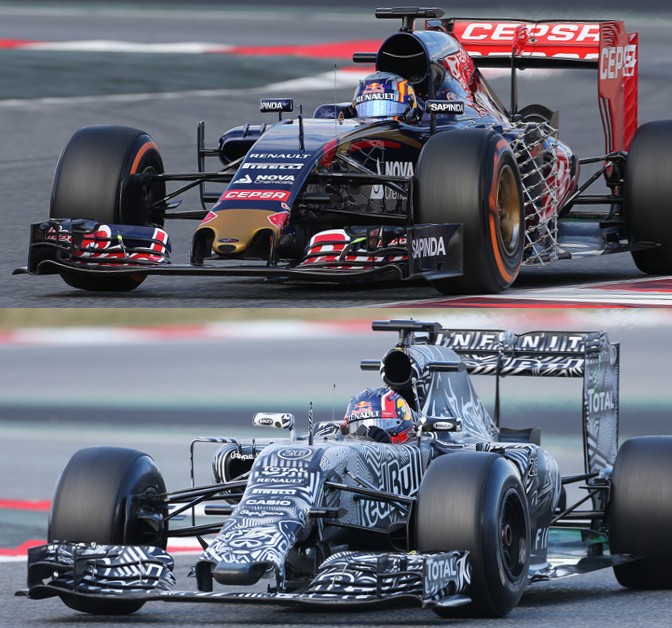Please explain that a bit more. I don't see how a change to the Mercedes nose is such a huge undertaking. The nose does have some interaction with the front wing but it does not dictate how every areo bit on the car operates.
It's quite a bit more then just "some interaction" but we'll get to that.
First of all, notice that the bulkhead sits a lot high at the red bull chassis then the mercedes chassis. One particular key element to be STRUCTURALLY able to fit a nose like the Mercedes/Lotus one, one that can pass the crash tests, is to have a lower front bulkhead, so that the nose has to angle less agressively down in the short space between bulkhead and the neutral section of the wing. This effectively means that Red Bull will have to make changes to the chassis. Now you can't just leave the drivers without a chassis to race, so you need to make new chassis' altogether, which on itself is a huge undertaking, left alone redesigning one on top of that.
Second, the nose itself will pose a problem to crashtest, even with adapted chassis. It's very, very short and thin. It'll take both time and resources to get it correct without adding too much weight.
Last but not least, the aerodynamic consequences. Ask anybody how important the nose is aerodynamically and they'll tell you "one of the most important things on the car". The nose creates quite few vortices which play a role in clean flow to the floor and splitter, which has a turn on effect on the diffuser. A small change upsets the complete airflow structure and requires redesigning everything behind it: underchassis vanes, brake ducts, splitter, etc. The nose also interacts with Y250 vortices, which are also one of te most important vortices.
Next to that, notice that a Mercedes nose allows only very small pylons. Pylons have been increasingly used as turning vanes the last few years and team wants to maximize the size of them. Going from big pylons to small pylons will force the team to complete rethink how they want redirect airflow underneath the chassis.
It's the biggest undertaking since a long time, during a season (I want to stress on that:
during a season). This is certainly doable if you are able to work a whole year on the project, with the car only being produced during the winter. But imagine trying to apply this during the season: you'd be spending months resources, cfd time, windtunnel time, etc to properly fit a different type of nose cone. Then it still needs to be validated on track.







